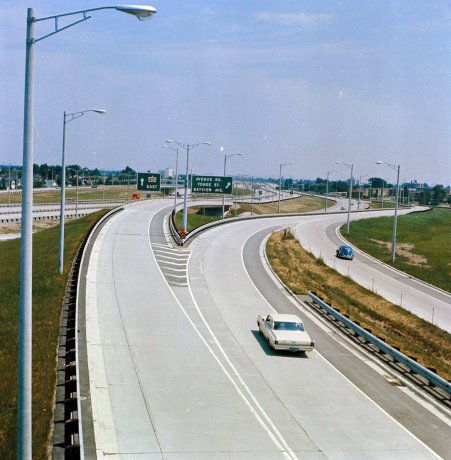This year marks a 50th anniversary for Highway 401. By 1964, construction had progressed to the point that drivers could make a continuous journey along the highway from Windsor, Ont. to the Quebec border. However, if ribbons were cut, history did not record it.
In part, that’s because the construction of Highway 401 was an extremely long-term project full of milestones that continue into today.
The need for a major east-west highway was established in the 1930s, says Cameron Bevers, project manager at the Ontario Ministry of Transportation and owner of Ontario highway history website www.thekingshighway.ca.
"At that time, Ontario relied primarily on Highway 2 and Highway 7, which passed through the centres of cities like Woodstock," he says. "As trucking became more prevalent in the 1950s and 1960s, it put a lot of pressure on town streets that were ill-equipped to carry that kind of traffic."
The first phase of what eventually became the 401 was Highway 2A, a four-lane divided highway stretching from Scarborough’s West Hill to Oshawa. Begun in 1938, construction was suspended during WWII with the highway completed in 1947. That route number was changed to 401 in 1952 and began the modern era of the highway’s construction.
"The Ontario Department of Highways realized the magnitude and cost of the undertaking, so the plan was always to build the highway in phases," says Bevers. "Priority was given to communities that experienced the worst congestion."
The first sections to receive attention were: Windsor to Tilbury; London to Woodstock; Milton to Toronto; the Toronto Bypass; Oshawa to Port Hope; Trenton to Belleville; and Kingston to Gananoque.
"Even within those areas, the road was built in stages," says Bevers. "For example, contractors in eastern Ontario might finish one two-lane section of what was designed to be a four-lane divided highway and traffic would travel in both directions on those two lanes until the other two lanes were built."
While the 401 is an asphalt highway, both concrete and asphalt were initially used. The Toronto-to-Oshawa section, among others, was first constructed in concrete.
Bevers counts October 1968 as a more significant milestone for 401 construction. "In that year, the final four-lane section of Highway 401 was opened to traffic between Gananoque and Brockville," he says. "That marked the completion of an 818-kilometre controlled-access freeway across the southern half of Ontario."
That final section also provided engineers with the greatest construction challenges, notes Bevers.
"The Thousand Islands Parkway, which runs between those communities, was initially designated as part of the 401," he says. "I suspect the highway designers grappled with the idea of blasting interchanges into the rock and providing service roads to properties that currently had access to the parkway. They eventually realigned the 401 so that it ran to the north."
Another significant highway development was the creation of Toronto’s collector system, designed to separate local traffic traveling only a short distance from long-distance express traffic.
"The engineering challenge was designing the project in such a way that all existing traffic lanes could be kept open during construction," says Bevers. "This was especially challenging at the complicated interchanges which were created."
While many Canadians imagine traffic arteries in New York City or Los Angeles would top the continent’s busiest highways that honour goes to — the 401.
"The busiest section of Highway 401 runs from Weston Road to Highway 400, where more than 403,000 vehicles use the highway on a typical day," says Bevers.
Lastly, where is Ontario’s Highway 1?
One of the most frequent questions asked by visitors to Bevers’ Ontario road history website, The King’s Highway: "Why does Ontario not have a Highway 1?"
"Reportedly, Highway 1 was omitted from the 1925 route numbering system to eliminate conflicts between many large Ontario towns, who all demanded to be on a highway bearing route number 1," says Bevers. "Rather than risk accusations of favouritism, the Department of Highways decided that they would simply begin route numbering at 2."











Recent Comments
comments for this post are closed